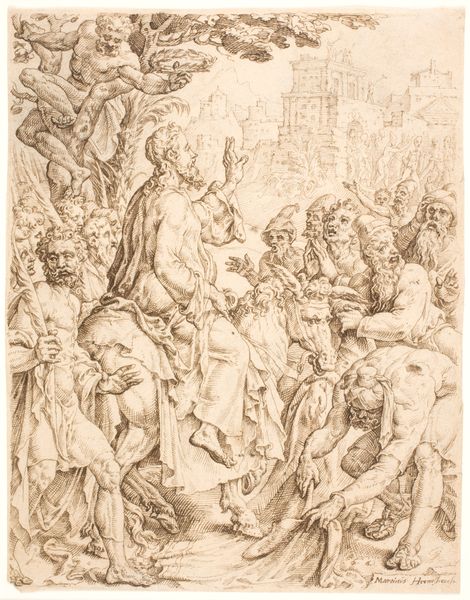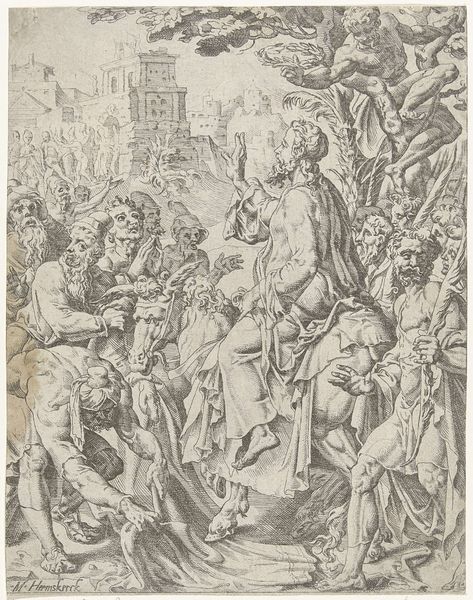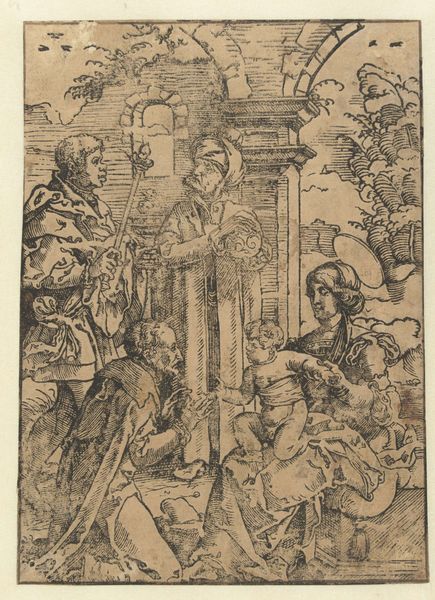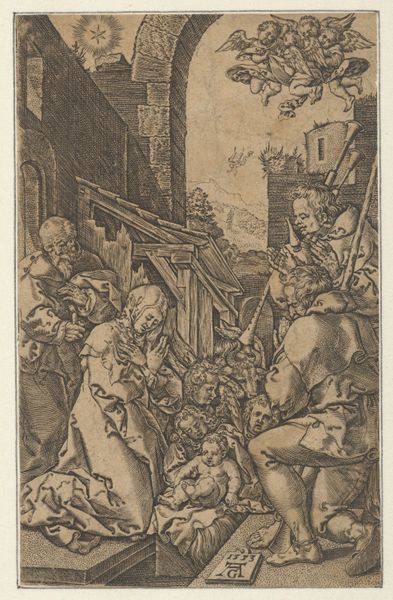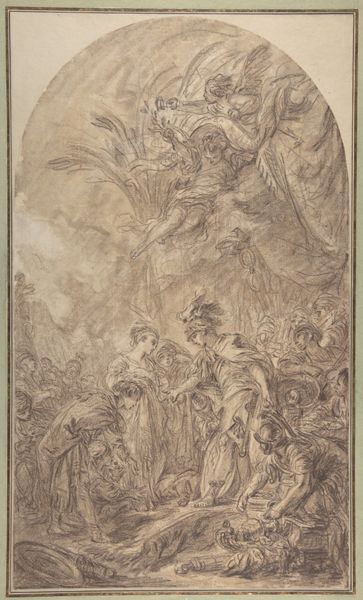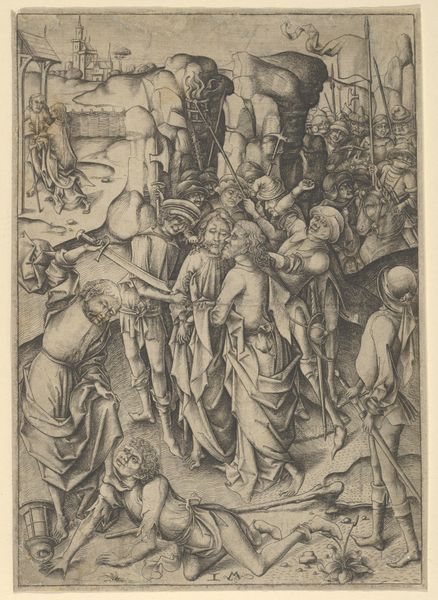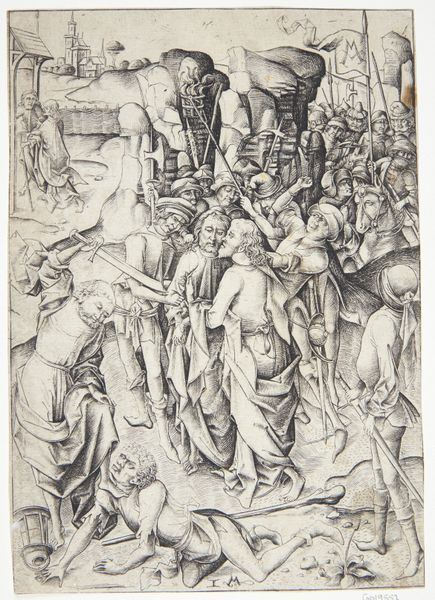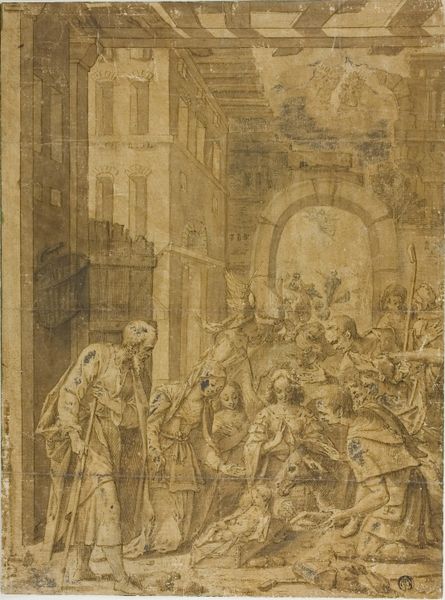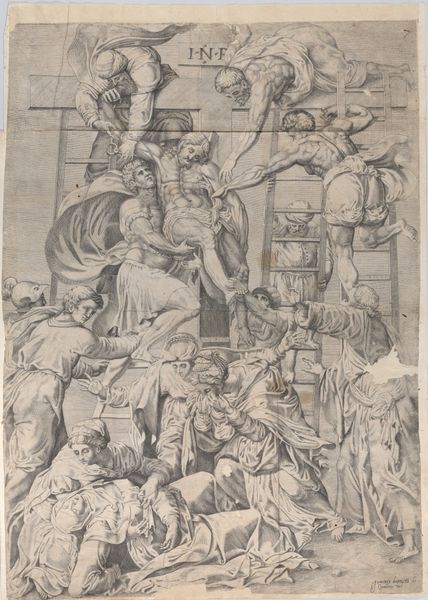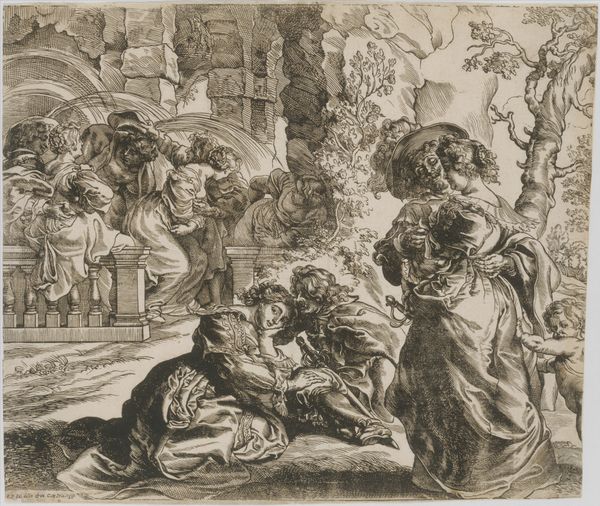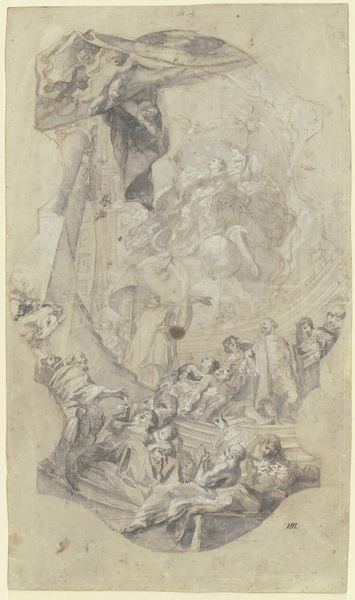
drawing, print, ink, pen
#
drawing
#
ink drawing
#
narrative-art
#
ink painting
# print
#
pen sketch
#
pencil sketch
#
figuration
#
11_renaissance
#
ink
#
pen
#
history-painting
Dimensions: sheet: 11 7/8 x 7 15/16 in. (30.1 x 20.1 cm)
Copyright: Public Domain
Curator: Standing before us is "The Raising of the Youth of Naim," a work dating between 1568 and 1604, currently residing at The Met. It's rendered in ink and pen. Editor: It strikes me as dramatic, yet ethereal. The lines are fluid, almost dreamlike. The scene pulses with life but is equally muted, conveying a strong, albeit complex, emotional tone. Curator: Exactly, we see this potent scene depicted in ink, allowing the narrative and figures to blend softly. What’s powerful to me is how it places a biblical story within the socio-political fabric of its time, reflecting how power structures intersected with religious belief. Editor: Tell me more about this potent scene... The composition directs the viewer’s eye immediately to Christ, who stands centrally surrounded by onlookers as he performs this miracle. The youth at his feet lies prostrate, vulnerable. The contrast between Christ's commanding presence and the youth's apparent lifelessness certainly underlines the core subject: resurrection and the power of divine intervention. The Renaissance architecture also seems highly deliberate. Curator: Yes, consider the narrative weight—Christ's power against the backdrop of societal hierarchies. I see this work speaking to class and ability. The architecture is key here; that juxtaposition mirrors societal structures, underscoring the politics embedded within religious art and patronage during the Renaissance. These aren't just holy stories; they're ideological statements, carefully constructed. The institutions reflected by such architecture would exert significant influence over the lives depicted. Editor: I agree entirely; one can sense that struggle between religious devotion, earthly life, and institutional frameworks in every deliberate pen stroke and wash of ink within it. The inclusion of a dog, commonly representing fidelity and domesticity, could symbolize the return to ordinary social structures brought about by this miracle. It highlights not just spiritual intervention but the restoration of communal ties. Curator: And the presence of onlookers adds depth, echoing those everyday folks and raising concerns of witness, collective experience and cultural memory during the Renaissance. What part did the elite actually play versus what part was publicized through such works? Who benefited the most? It allows us to question the construction and maintenance of historical narratives. Editor: I never thought of it that way. I came here seeing a simple illustration of an Italian biblical miracle, but I walk away now pondering how this medium subtly portrays complex social dynamics of its period, which is what makes art so vital and important to study and experience. Curator: Indeed! Thank you for taking the journey to consider history as it speaks to both those periods and our current world!
Comments
No comments
Be the first to comment and join the conversation on the ultimate creative platform.
